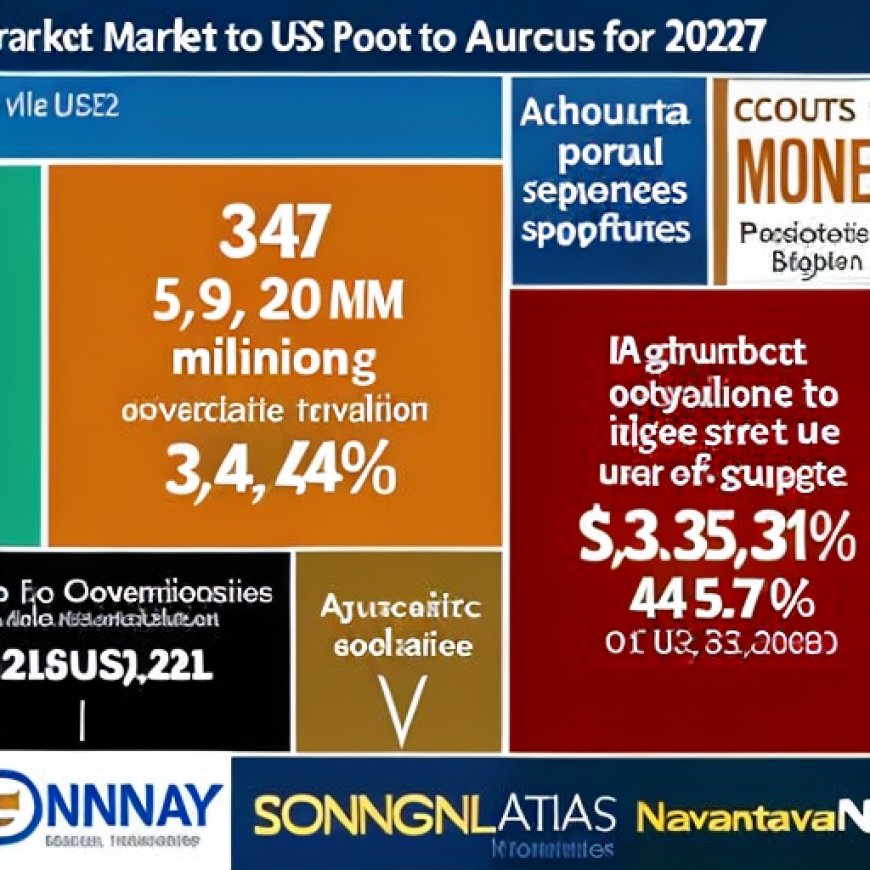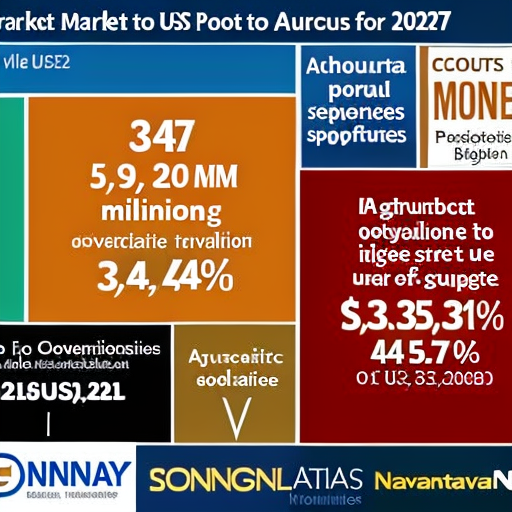Agricultural Biologicals Market size to grow by USD 10,457.38 million from 2022 to 2027|Increasing governmental support for the use of bio-based products in agriculture will drive the market – Technavio
Agricultural Biologicals Market size to grow by USD 10,457.38 million from 2022 to 2027|Increasing governmental support for the use of bio-based products in agriculture will drive the market - Technavio Yahoo Finance


Global Agricultural Biologicals Market Projected to Grow at a CAGR of 14.24% by 2027
Introduction
The global agricultural biologicals market is expected to experience significant growth between 2022 and 2027, with a projected CAGR of 14.24%. The market size is forecasted to increase by USD 10,457.38 million during this period. One of the major drivers for this growth is the increasing governmental support for the use of bio-based products in agriculture. The adoption of bio-based products by farmers, driven by the need for sustainable agricultural techniques, has led to various initiatives globally to encourage their use. Governments are involved in quality control and ensure that agricultural producers receive high-quality bio-based products. These initiatives, along with discounts provided to farmers, have increased the demand for bio-based products and contributed to the market’s expansion.
Agricultural Biologicals Market Trend – Increasing Product Launches
An emerging trend in the agricultural biologicals market is the increasing number of product launches. Farmers are increasingly demanding agricultural biologicals, particularly biopesticides and biostimulants, to reduce crop damage from pest infestations and increase crop production. The shrinking arable land in many countries, especially in APAC and North America, has also influenced the demand for biopesticides. In response to these factors, numerous vendors are diversifying their product offerings by introducing new agricultural biological variants. For example, Syngenta Crop Protection AG, in partnership with Novozymes, launched several bio fungicides in Europe and South America in 2020 under their commercialized portfolio TAEGRO. The demand for and introduction of agricultural biologicals are expected to rise further, particularly in Europe and South America, due to low entry barriers, the environmentally friendly nature of these products, consumer demand for high-quality food, and rising health consciousness.
Key Data Covered in Agricultural Biologicals Market Report
- Detailed information on factors including driver details
- Market segmentation by Type (Biopesticides, Biofertilizers, and Biostimulants), Application (Cereals and grains, Fruits and vegetables, Oilseeds and pulses, and Other crops), and Geography (North America, Europe, APAC, South America, and Middle East and Africa)
- Precise estimation of the agricultural biologicals market size and its contribution to the parent market
- Accurate predictions about upcoming trends and changes in consumer behavior
- Comprehensive analysis of factors that will challenge the growth of agricultural biologicals market vendors
- A thorough analysis of the market’s competitive landscape and detailed information about vendors
- Growth of the industry across APAC, North America, Europe, Middle East and Africa, and South America
- CAGR of the market during the forecast period
Company Analysis and Scope
The agricultural biologicals market report provides a detailed analysis of around 15+ vendors operating in the market. Some of these vendors include Agrinos AS, Andermatt Group AG, BASF SE, Bayer AG, Biological Products Industry Alliance, Evogene Ltd., Gowan Co., Koppert, Marrone Bio Innovations Inc., Mitsui and Co. Ltd., Novozymes AS, PI Industries Ltd., SEIPASA SA, SOM Phytopharma India Ltd., Syngenta Crop Protection AG, T.Stanes and Co. Ltd., UPL Ltd., Valent BioSciences LLC, Vegalab SA, and PROBELTE SAU.
Company Offerings
- Agrinos AS – The company offers agricultural biologicals such as iNvigorate.
- Andermatt Group AG – The company offers agricultural biologicals such as AlgoVital Plus and T-Gro.
- BASF SE – The company offers agricultural biologicals such as Nemasys C.
Conclusion
The global agricultural biologicals market is expected to witness significant growth in the coming years, driven by increasing governmental support for bio-based products in agriculture and the demand for sustainable agricultural techniques. The market is characterized by the increasing number of product launches, particularly in Europe and South America. Detailed information on market growth, size, and trends can be found in the full report.
SDGs, Targets, and Indicators
1. Which SDGs are addressed or connected to the issues highlighted in the article?
- SDG 2: Zero Hunger
- SDG 12: Responsible Consumption and Production
- SDG 13: Climate Action
- SDG 15: Life on Land
The article discusses the global agricultural biologicals market, which is related to SDG 2 as it aims to improve agricultural practices and increase crop production to address hunger and food security. It also connects to SDG 12 as it promotes the use of bio-based products and sustainable agricultural techniques, contributing to responsible consumption and production. Additionally, the adoption of bio-based products helps mitigate climate change (SDG 13) and supports biodiversity conservation (SDG 15).
2. What specific targets under those SDGs can be identified based on the article’s content?
- Target 2.4: By 2030, ensure sustainable food production systems and implement resilient agricultural practices that increase productivity and production.
- Target 12.4: By 2020, achieve the environmentally sound management of chemicals and all wastes throughout their life cycle, in accordance with agreed international frameworks, and significantly reduce their release to air, water, and soil to minimize their adverse impacts on human health and the environment.
- Target 13.3: Improve education, awareness-raising, and human and institutional capacity on climate change mitigation, adaptation, impact reduction, and early warning.
- Target 15.5: Take urgent and significant action to reduce the degradation of natural habitats, halt the loss of biodiversity, and protect and prevent the extinction of threatened species.
Based on the article, the targets mentioned above can be identified. The adoption of sustainable agricultural practices using bio-based products contributes to sustainable food production systems (Target 2.4) and the environmentally sound management of chemicals (Target 12.4). The initiatives to encourage the use of bio-based products also promote education and awareness on climate change mitigation (Target 13.3) and contribute to the protection of biodiversity (Target 15.5).
3. Are there any indicators mentioned or implied in the article that can be used to measure progress towards the identified targets?
Yes, the following indicators can be used to measure progress towards the identified targets:
- Indicator 2.4.1: Proportion of agricultural area under productive and sustainable agriculture
- Indicator 12.4.1: Number of parties to international multilateral environmental agreements on hazardous waste, including their compliance with the agreements
- Indicator 13.3.1: Number of countries that have integrated mitigation, adaptation, impact reduction, and early warning measures into primary, secondary, and tertiary curricula
- Indicator 15.5.1: Red List Index
These indicators can measure the proportion of agricultural area adopting sustainable practices (Indicator 2.4.1), the compliance with international agreements on hazardous waste management (Indicator 12.4.1), the integration of climate change measures in education (Indicator 13.3.1), and the conservation status of threatened species (Indicator 15.5.1).
Table: SDGs, Targets, and Indicators
| SDGs | Targets | Indicators |
|---|---|---|
| SDG 2: Zero Hunger | Target 2.4: By 2030, ensure sustainable food production systems and implement resilient agricultural practices that increase productivity and production. | Indicator 2.4.1: Proportion of agricultural area under productive and sustainable agriculture |
| SDG 12: Responsible Consumption and Production | Target 12.4: By 2020, achieve the environmentally sound management of chemicals and all wastes throughout their life cycle, in accordance with agreed international frameworks, and significantly reduce their release to air, water, and soil to minimize their adverse impacts on human health and the environment. | Indicator 12.4.1: Number of parties to international multilateral environmental agreements on hazardous waste, including their compliance with the agreements |
| SDG 13: Climate Action | Target 13.3: Improve education, awareness-raising, and human and institutional capacity on climate change mitigation, adaptation, impact reduction, and early warning. | Indicator 13.3.1: Number of countries that have integrated mitigation, adaptation, impact reduction, and early warning measures into primary, secondary, and tertiary curricula |
| SDG 15: Life on Land | Target 15.5: Take urgent and significant action to reduce the degradation of natural habitats, halt the loss of biodiversity, and protect and prevent the extinction of threatened species. | Indicator 15.5.1: Red List Index |
Behold! This splendid article springs forth from the wellspring of knowledge, shaped by a wondrous proprietary AI technology that delved into a vast ocean of data, illuminating the path towards the Sustainable Development Goals. Remember that all rights are reserved by SDG Investors LLC, empowering us to champion progress together.
Source: finance.yahoo.com

Join us, as fellow seekers of change, on a transformative journey at https://sdgtalks.ai/welcome, where you can become a member and actively contribute to shaping a brighter future.







